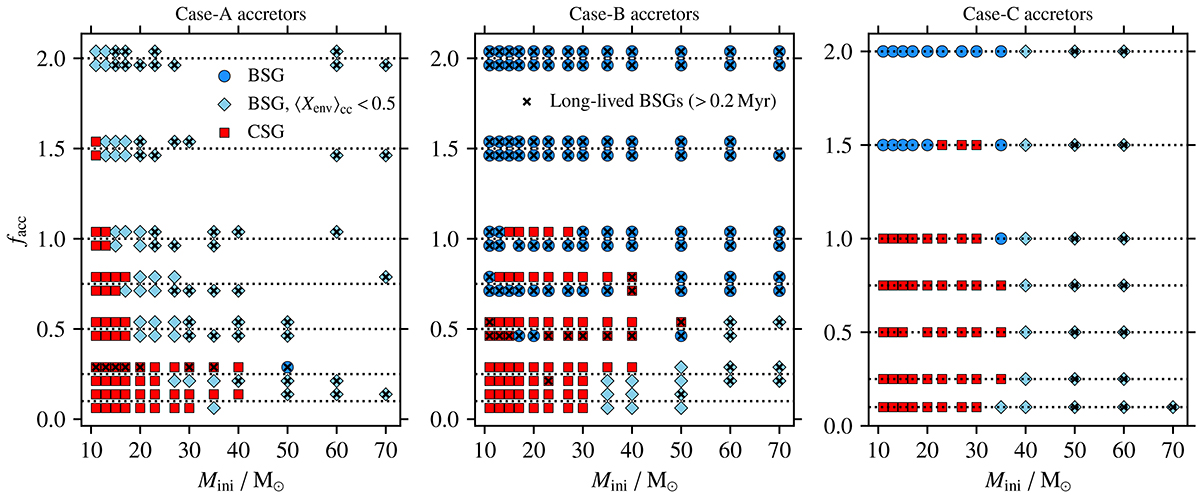Fig. A.3.

Download original image
Endstages of the accretor models as BSGs and CSGs in the grid spanned by the initial mass Mini and the accretion fraction facc. Supergiants that are hot (blue; BSGs) because of a high surface helium mass fraction (⟨Xenv⟩cc < 0.5) are shown separately. Cross symbols indicate models that burn helium in their cores for more than 0.2 Myr at effective temperatures of log Teff/K < 3.9, that is as BSGs, and the three panels are for Case A, B, and C accretors. Early Case A and-B accretors are offset to lower values along their respective facc indicated by the dotted black lines while late Case A and-B models are offset to slightly higher values. This overview of the model grid visually underlines two key results presented in Sect. 3. Firstly, there are models that burn helium in their cores as BSGs but explode as CSGs while other models also explode as BSGs and never become CSGs because of the accretion. Secondly, the need for larger facc in more evolved pre-accretors to turn them into long-lived BSGs is illustrated clearly. The threshold facc values to turn stars into long-lived BSGs is significantly lower in merger models that also account for mixing of core material into the envelope such that the values here should be understood as upper limits.
Current usage metrics show cumulative count of Article Views (full-text article views including HTML views, PDF and ePub downloads, according to the available data) and Abstracts Views on Vision4Press platform.
Data correspond to usage on the plateform after 2015. The current usage metrics is available 48-96 hours after online publication and is updated daily on week days.
Initial download of the metrics may take a while.


